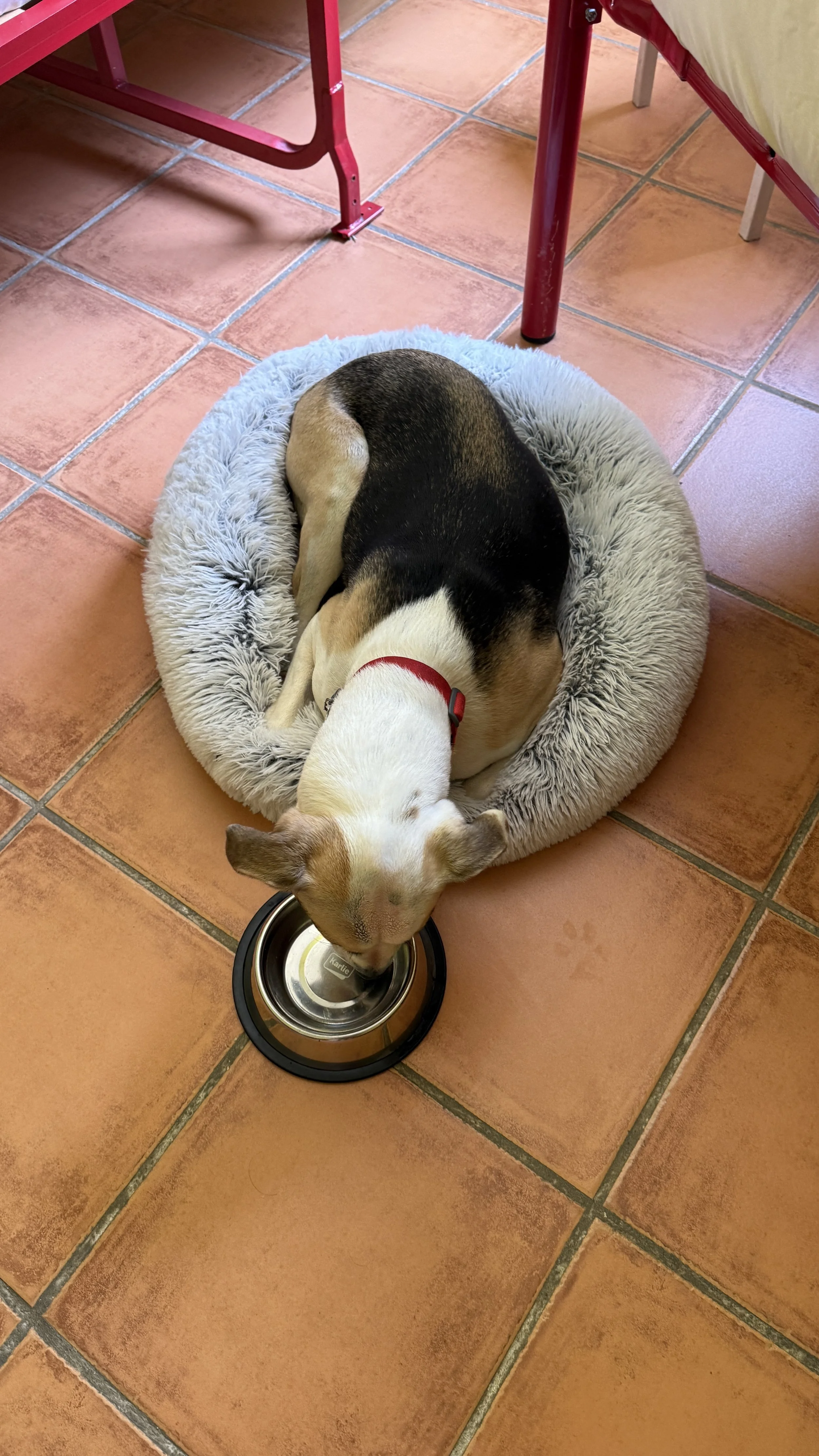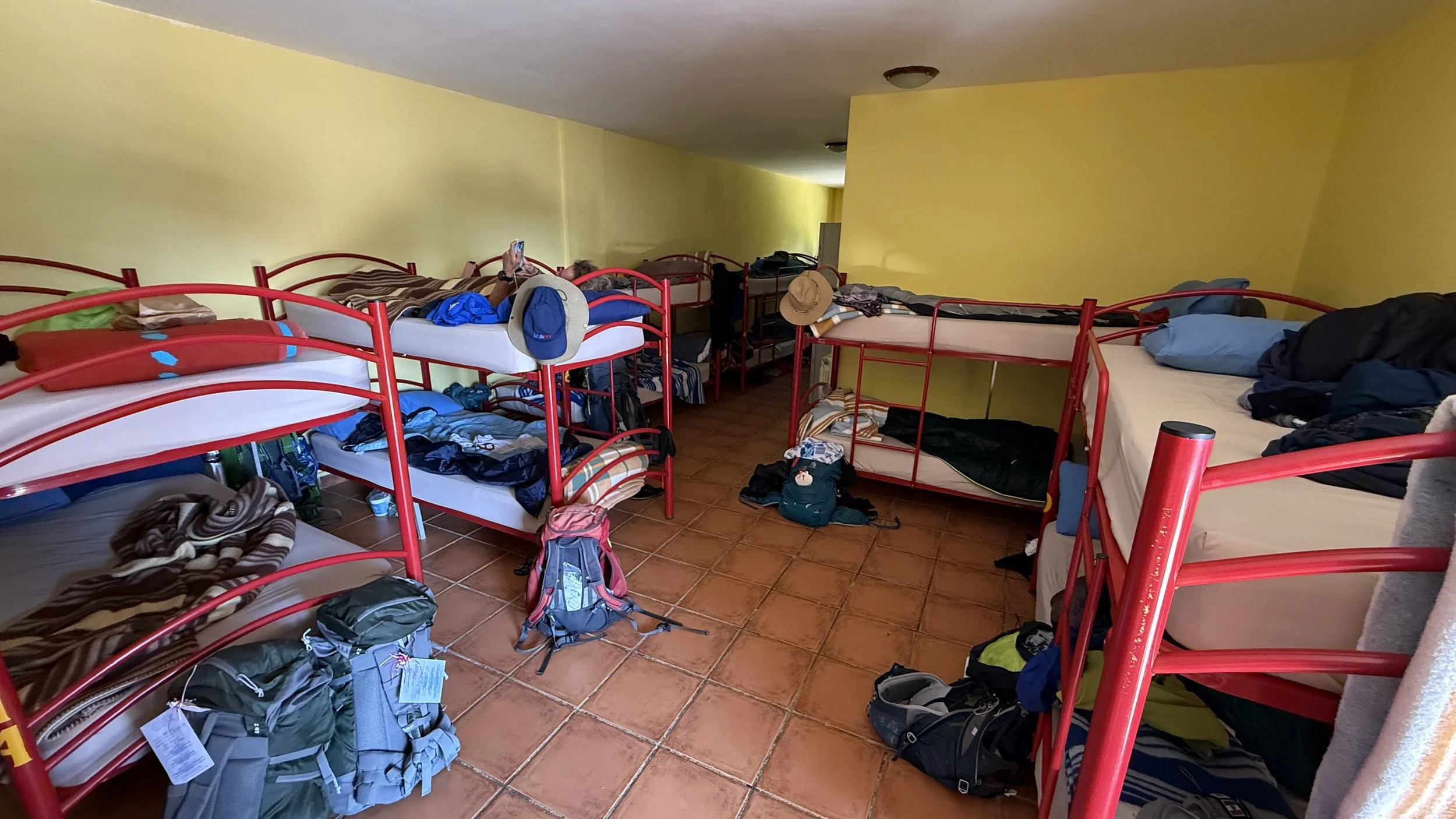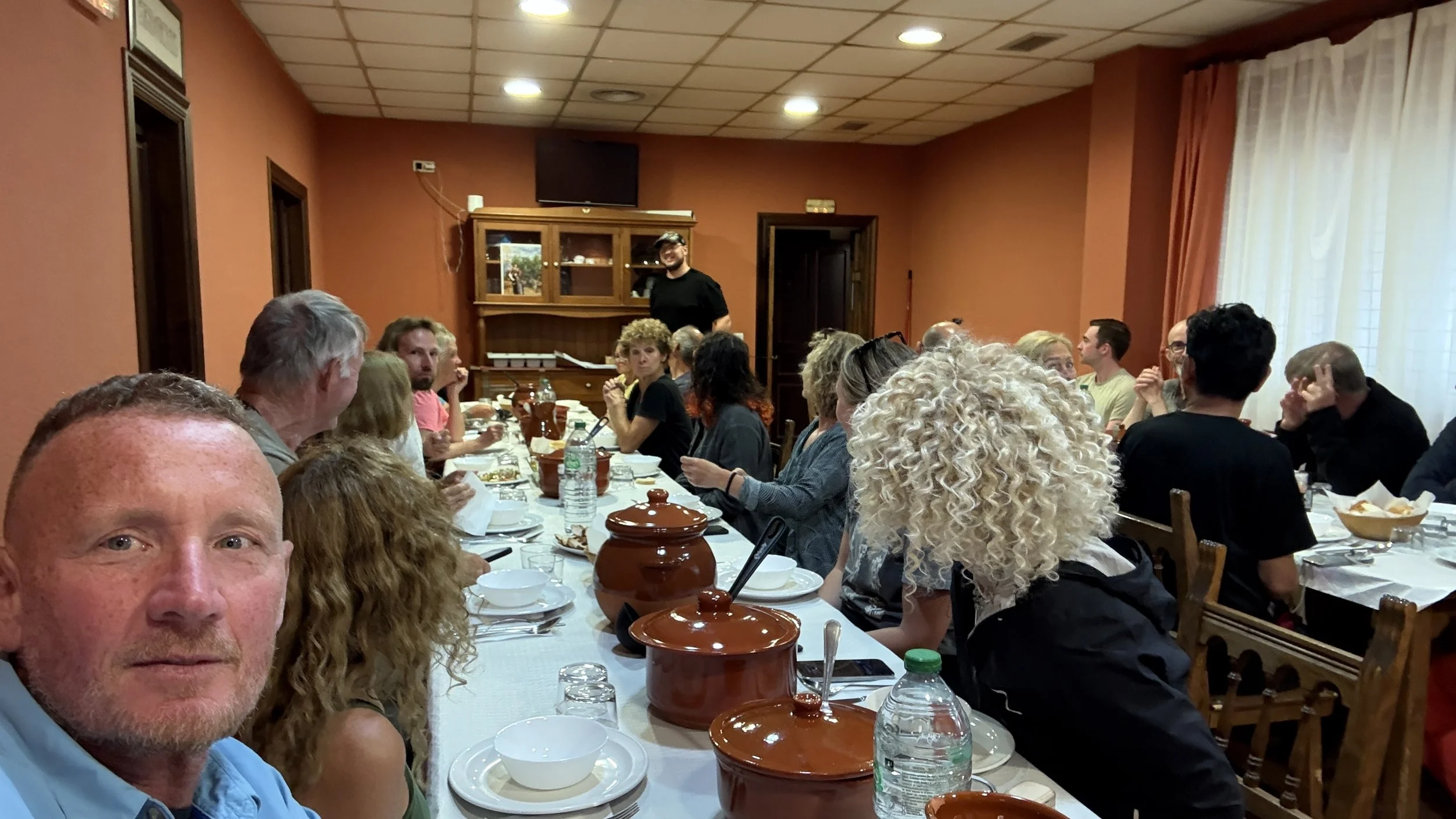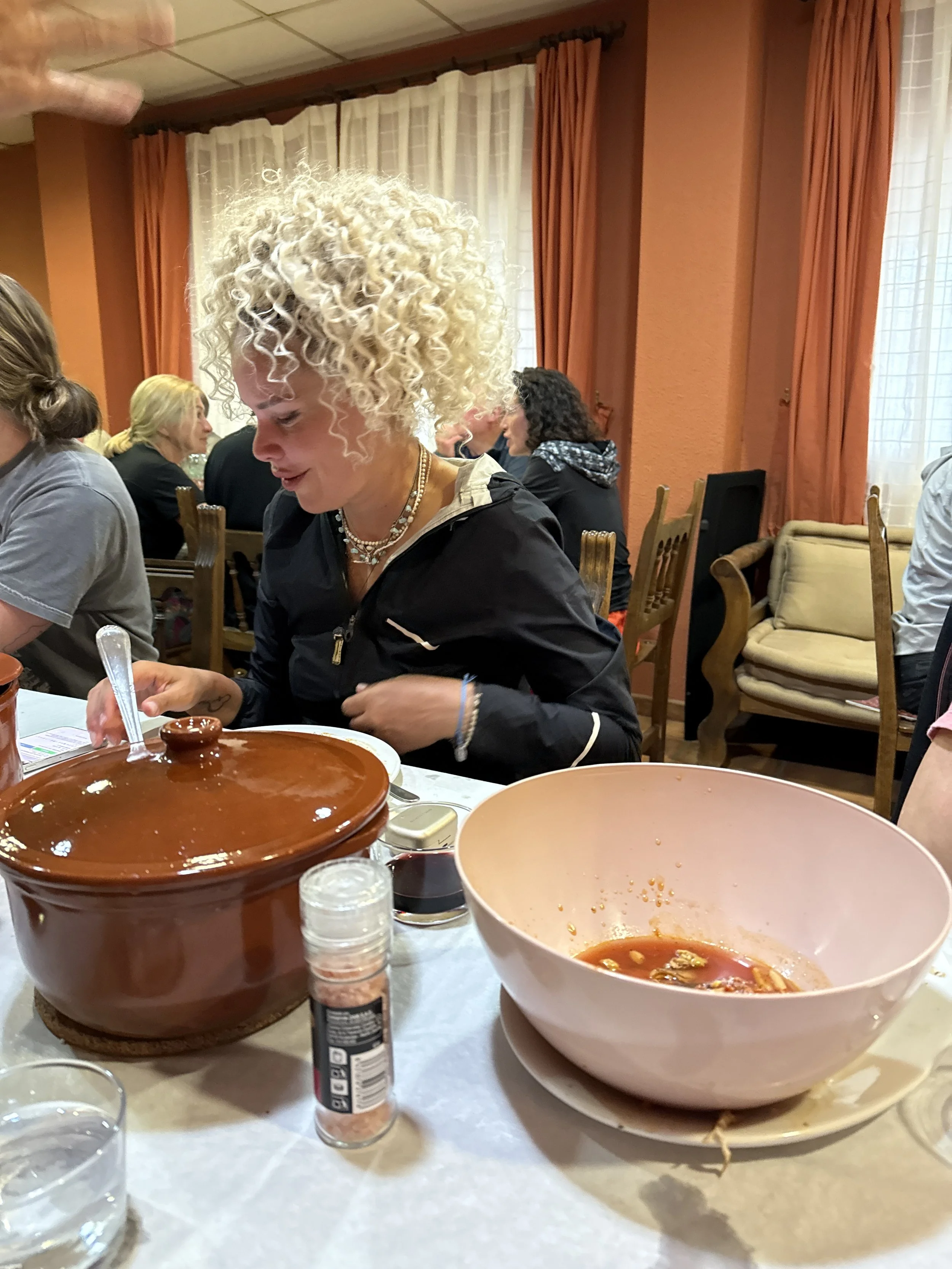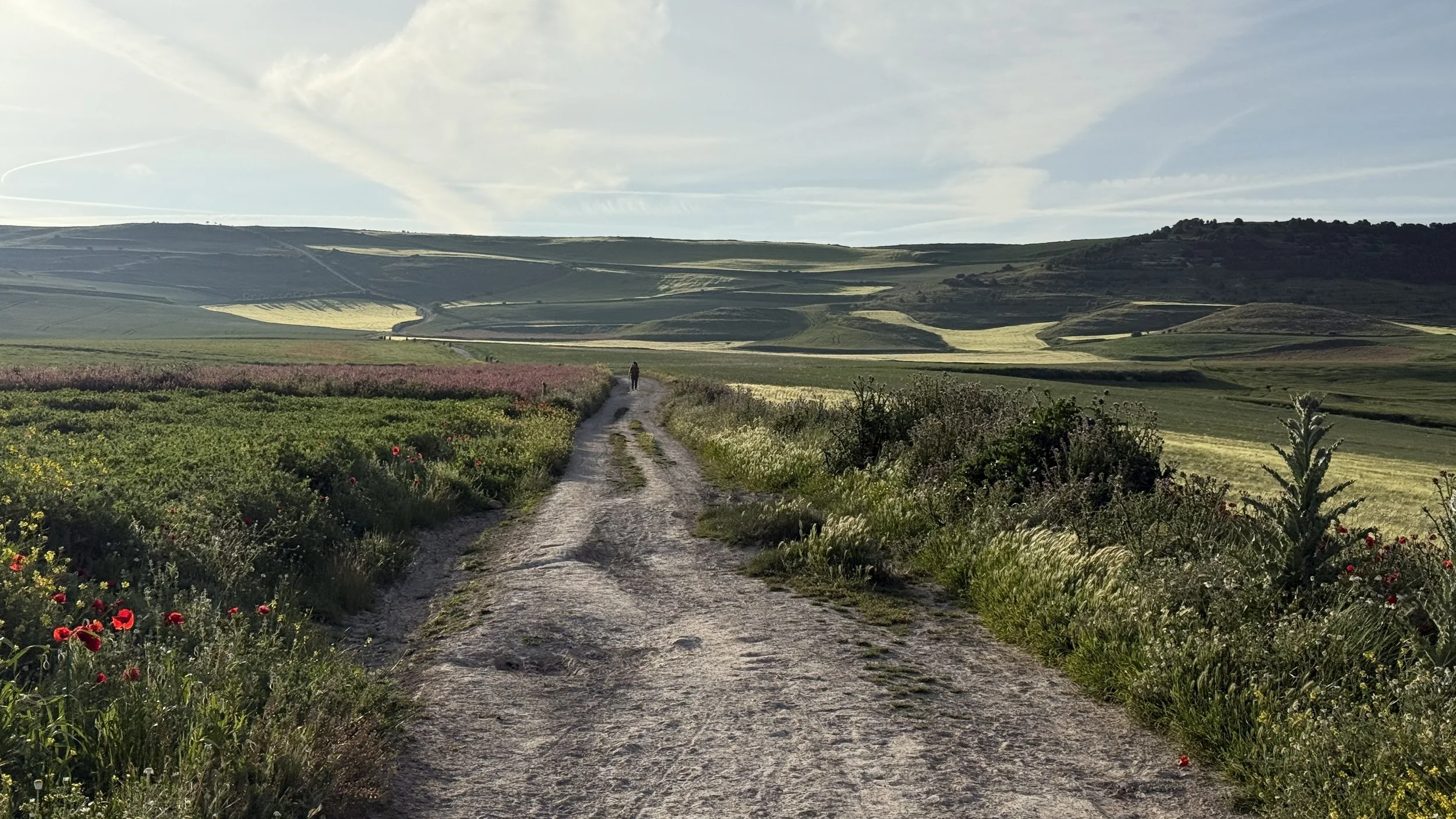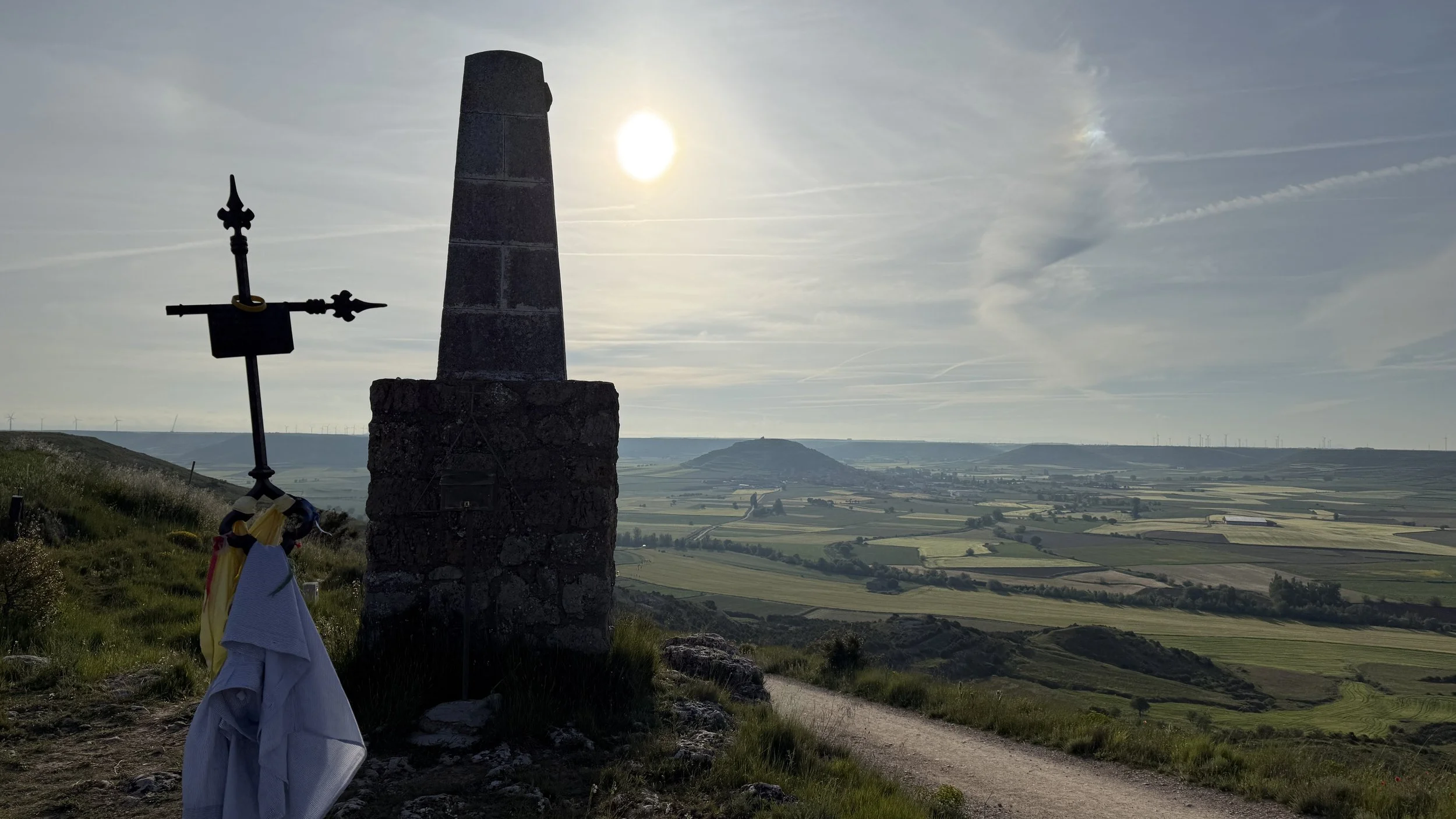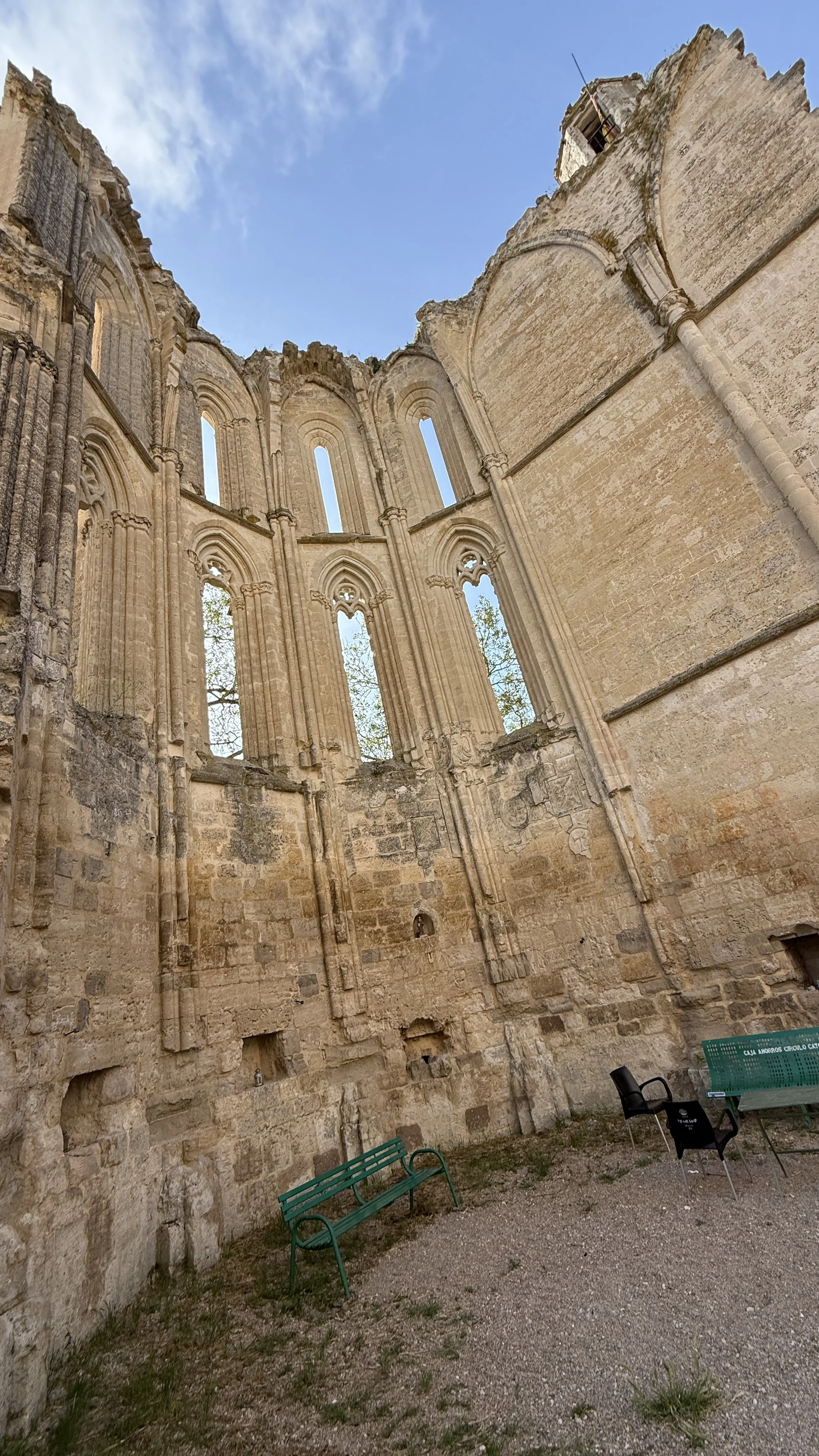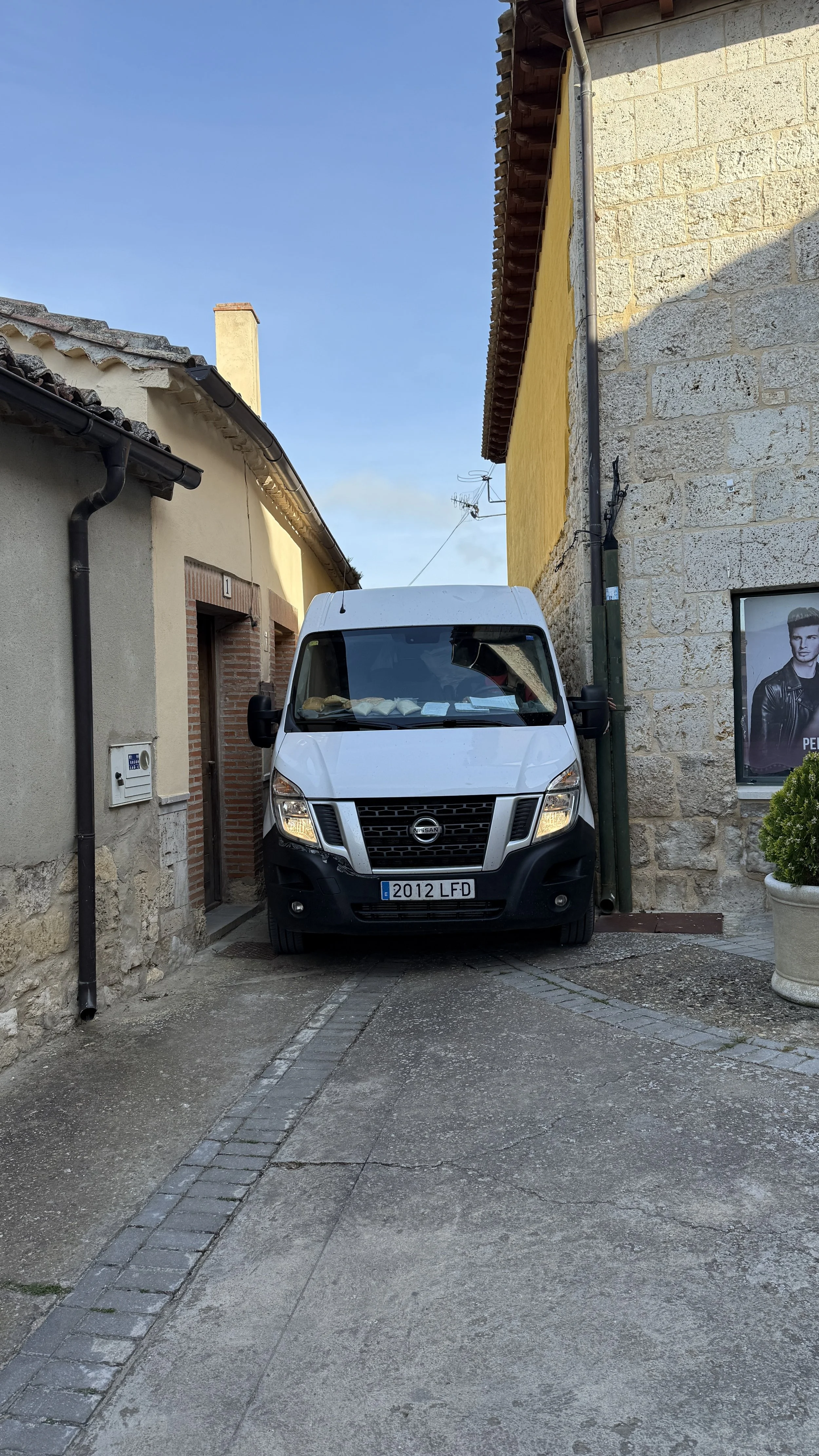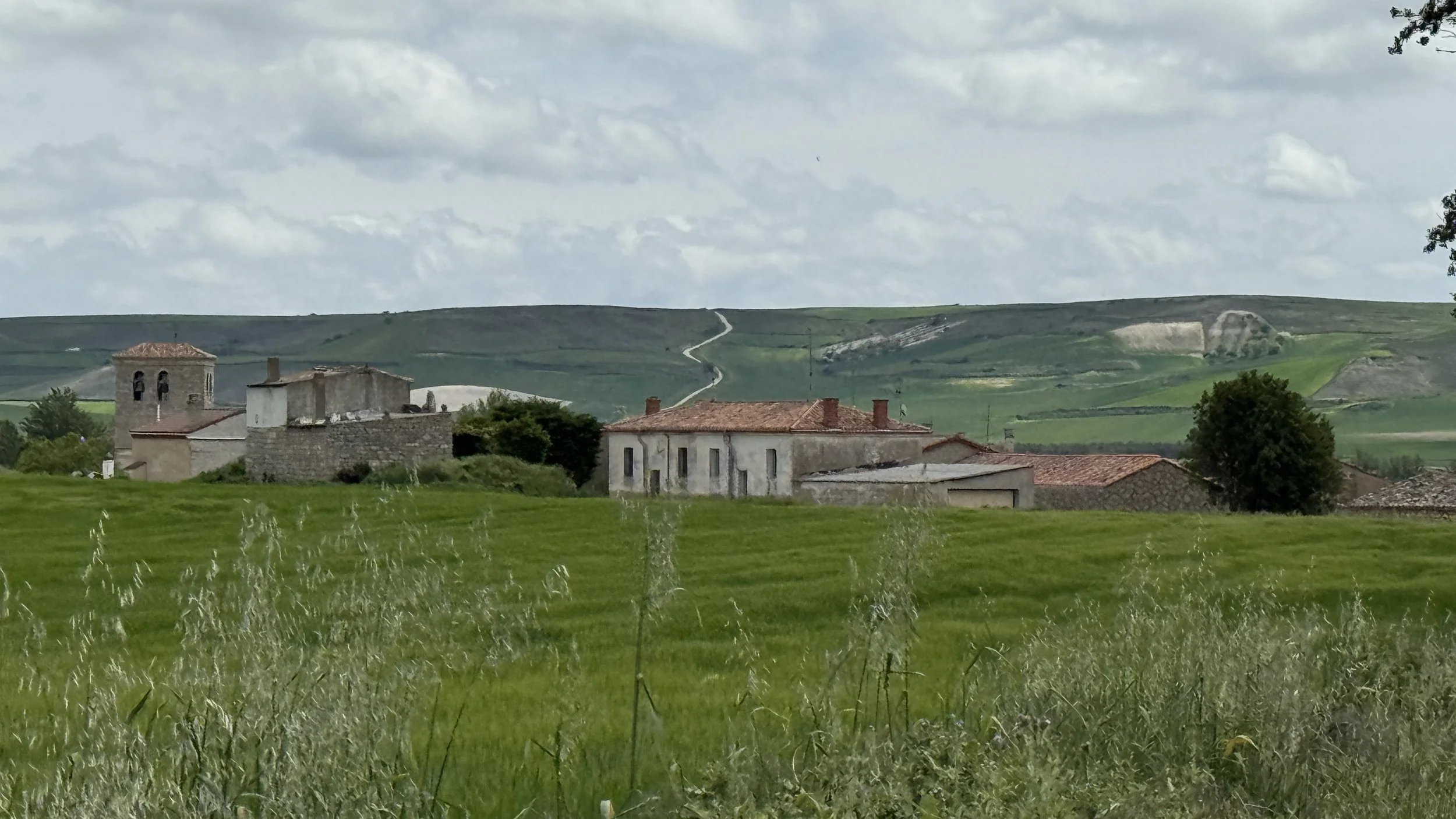Day 19 - May 26th: Rollers
Itero de la Vega to Tardajos: 24.22 miles / 451 total
Incoming transmission from Christina a few kilometers before arriving at the only hostal in the small village of Itero de la Vega:
“Tonight we will have the experience of the trip!! Be ready 😂”
Towards the end of the day, when you're tired—maybe even delirious—you can ponder the meaning of a message like that. Massage? A different type of menú del día? A tasting menu paired with local wines? Maybe just a shower with decent water pressure? None of the above, but Christina was right!
It was our first real taste of albergue living. Puente Fitero was a pilgrim oasis in the wilderness. I walked into a plaza surrounded on three sides by structures, filled with tables, umbrellas, clotheslines, and 30–40 pilgrims in various stages of the daily ritual: drinking beer, socializing, washing clothes, eating—or just passing through because there were no rooms left.
Once again, Christina saved the day by securing a room in our target village—the best-case, most efficient scenario. It was the last room at the far end of the compound, oddly shaped with a single large window. Inside: four metal single beds, each with a pillow, folded sheet, well-used blanket, and one bath towel. The proprietors—a Ukrainian brother and sister and two Germans—rented the business from Spanish owners. Because of Jax, we had to take the entire room, but they gave us a deal: €45 instead of €48. Deal!
Christina immediately began her reconnaissance mission, smelling each mattress to find the two safest. By the time I walked in, she had already picked our beds.
This little cluster of pilgrims felt like another world—no one knew the date, the news, or anything outside this village. And it was wonderful. By night’s end, everyone had connected. Christina and I drank Estrella Galicia on tap and chatted with different groups while Jax, too tired to move, ate dinner in his bed and crashed.
I noticed the door of the room next to us opening and closing frequently. It was one of the community rooms. I peeked in and counted 16 beds and 1 bathroom.
Dinner was communal and exceptional. Two long tables indoors. The Ukrainian hosts welcomed us to the family meal: hearty vegetable soup, bread, salad, penne pasta with meat sauce, pork tenderloin, dessert, and unlimited jugs of local red wine. We passed food back and forth, and afterward, everyone helped clean up.
I met Gabriela, a striking hairstylist from Bucharest who had decided—without much reason—to do the Camino solo. She was also a passionate dog person. I FaceTimed my good friends Mike and Ellana Trandifieurescu, also from Bucharest, to speak Romanian with her and verify her credentials. We had a great laugh.
Eric and Lydia, two young, strong Americans from LA, are walking the entire Camino and rethinking life beyond their jobs. The Ukrainian hosts, who fled two years ago, work around the clock to keep the place running. Jane, from Suffolk, England, sat next to me. Her partner of eight years gifted her this solo trip for her 60th birthday—something she had always dreamed of.
There’s magic on the Camino. It delivers surprises at every turn, and more importantly, it offers space to be authentic. Vulnerability is welcomed. People open up, just like in an ultra, where pain and fatigue strip away the surface, and deeper connections form.
Unfortunately, Jax and I left this morning with no coffee or breakfast. The restaurant was supposed to open at 7:00 a.m., but by 7:45 it still wasn’t. I wasn’t waiting. We set out at 50°F—warmer than usual—with wispy clouds and a steady easterly headwind.
Leaving our village and entering Burgos, a historically rich region, the trail led steeply upward, cresting a 1,500-foot rise. The descent curled along a graded path into Castrojeriz, a castelled town at the base of a hill. The town is believed to have been founded by Julius Caesar and it later became a significant Visigothic and Roman settlement. It looked like something out of Gladiator—I imagined Maximus walking through wheat fields toward the town.
From there, the terrain shifted to a densely flowered plateau trail, wildflowers blooming on either side in purple, yellow, reds and white. We came upon the remains of the Monastery of San Antón, a once-grand Gothic structure now reduced to a skeletal silhouette against the sky. Built in the 14th century, it served as a hospital and sanctuary for medieval pilgrims—especially those suffering from “St. Anthony’s Fire.”
Breaking over another pass, we descended into Hontanas, a lovely medieval town I stayed in with Amy and Tina three years ago. I went into the Church of the Immaculate Conception which dated back to the 14th century.
Tight fit for the daily bread delivery
Out of Hontanas came another climb, descent, and a few rollers before we reached Tardajos, where Christina had success again getting us a room.
Still no luck finding a vet to help with the ticks. Thankfully, Tina and I haven’t found any on ourselves—though a few have been spotted crawling on bed blankets.
I’m now 80 km behind schedule, but I’m encouraged. My shin improves daily. I still can’t run, but I’m covering more distance every day walking.
All for today.
Thanks for the support.
Cheers,
David
